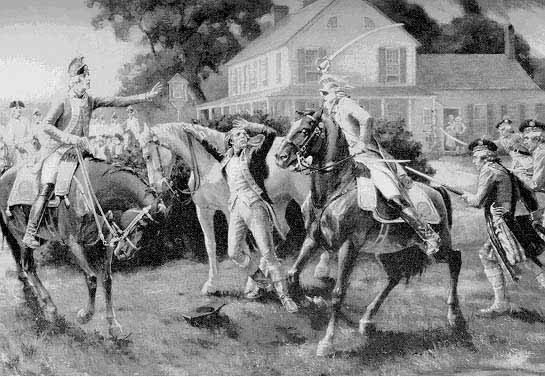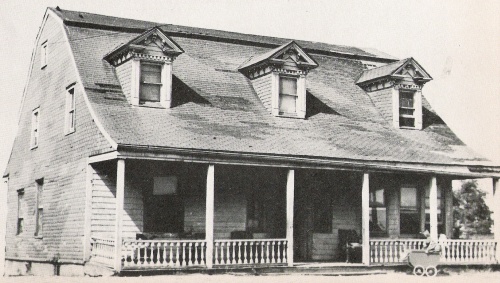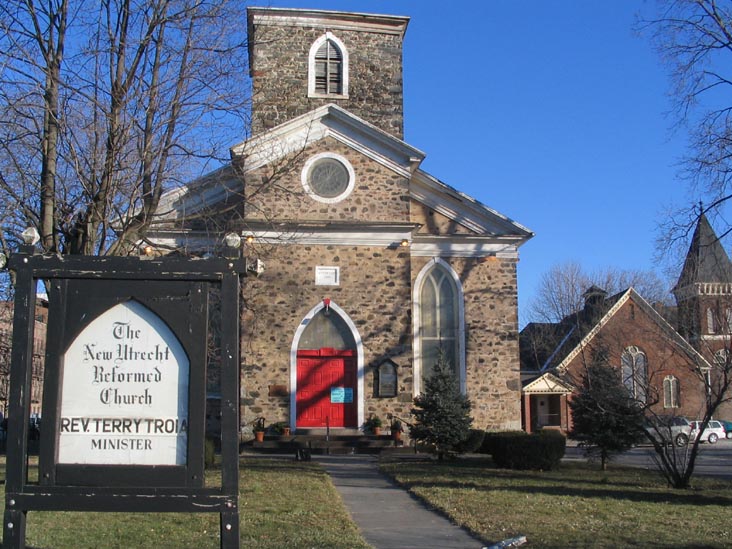New Utrecht Cemetery and Reformed ChurchFrom The Peopling of New York CityBrooklyn is aptly known as the borough of churches. I am focusing on the 4th oldest church in Brooklyn and mainly on the cemetery connected to it. To get a better look into the lives of those who lived through the history of the church and cemetery, I've decided to focus of two people connected to the cemetery and/or church. General Nathaniel Woodhull and Colonel James Cropsey
1. General Nathaniel Woodhull "General Nathaniel Woodhull was a leader of the New York Provincial Congress and a brigadier-general of the New York Militia during the American Revolution. He was born on December 30, 1722 in Mastic, Long Island, Province of New York, the son of Nathaniel Woodhull and Sarah Smith. His family had been prominent in New York affairs since the mid seventeenth century. Woodhull entered the military and in 1758 held the rank of major. He was at the battles of Crown Point and Ticonderoga under General Abercromby, and at the Battle of Fort Frontenac under General Bradstreet. In 1760, as colonel of the 3rd Regiment of New York Provincials took part in the invasion of Canada during the French and Indian War under General Amherst. After the end of hostilities, he returned to farming and community affairs. In 1761 he married Ruth Floyd, the sister of William Floyd a signer of the Declaration of Independence. Sentiment against England's taxation of the colonies led to Suffock County electing Woodhull to Province of New York assembly. From 1769 to 1775 he served as a member of the Province of New York assembly for Suffolk County. As such, he spoke against the Crown's colonial policies. He represented Suffolk also in the convention which chose delegates to the First Continental Congress, and in the New York Provincial Congress. In May 1775, the Provincial Congress assumed control of the colony and reorganized the militia. In October 1775 he was made brigadier general of the Suffolk and Queen's County militia. In 1776 took part in the Battle of Long Island. Leading up to the battle, his militia began removing livestock and matériel to prevent its use by the British. The Battle of Long Island resulted in his being cut off and he retired to Jamaica. Relief was not forthcoming, and his situation deteriorated. He was captured near Jamaica. Some accounts have it that he fought his captors and that his subsequent ill treatment resulted in his death on September 20, 1776. He was buried at his family home." 2. Colonel James Cropsey VAN BRUNT - CROPSEY HOUSE on 15th Avenue between 83rd & 84th Streets: Amongst the Dutch settlers the title of Boss (Baes) was a mark of respect and their descendants continued to call certain men "Boss." James CROPSEY was one of those men. To his associates he was Boss CROPSEY. But he was Colonel CROPSEY also, because he held that office in the Kings County Regiment of Horse Artillery that was known as the Buckskins. He was a man of worth in his community, an elder in the church for many years, assessor at different times and justice of the peace. By trade he was a master carpenter. James CROPSEY and his wife Jane are buried in the cemetery adjoining the New Utrecht Church. On his stone is carved: Col. James CROPSEY. who after a useful and estimable life, died Nov. 6, 1861, aged 75 yrs. 11 mo. and 22 da. He was born in New Utrecht 14 November 1785, the son of Harmanus CROPSEY (b.22 September 1753 - d. 7 October 1830) and his first wife Anna CONOVER who died shortly after her child's birth. Harmanus then married Elizabeth LAWRENCE of Staten Island who was so young that her guardian would not allow her to go to New Utrecht to live. So Harmanus CROPSEY moved to Staten Island leaving his baby son with the CONOVERS. Three months after his second wedding, his bride died. Later, he married Elizabeth RENEAU by whom he had a large family. He never returned to New Utrecht to live but remained in Staten Island. He is buried in the New Dorp Moravian Cemetery. Harmanus was a lieutenant in the New Utrecht militia and during the battle of Long Island was taken prisoner. He was put on one of the prison ships anchored in New York Bay. There he made a friend of an English guard who promised not to see him if he jumped overboard. So overboard Harmanus went and soon swam safely to shore.
The Old New Utrecht Cemetery The Old New Utrecht Cemetery's earliest recorded burial was in 1654. It is located on 16th Avenue and 84th Street adjacent to the site of the original octagonal church. Approximately 1300 dead are interred here including members of such notable families as the Van Pelts, Van Brunts, Cropseys, Cowenhovens and Bennetts. There is a communal plot for Revolutionary War soldiers and a section where free and slave individuals of African descent were buried. The monuments, which are in dire need of restoration, are some of the finest examples of their time. In 1916 The Daughters of The American Revolution dedicated a monument to General Nathaniel Woodhull. The New Utrecht (Dutch) Reformed Church
In 1828, to accommodate the changing needs of the community, the original octagonal structure was dismantled and its stones were used to build a new church on 84th Street and 18th Avenue. It is a rare example of a rural church in a picturesque setting in New York City. Like St. Augustine Church in Manhattan, built in the same year, its essentially Georgian design was superficially "Gothicized" by the addition of pointed-arch windows and pinnacles on the tower. Few ecclesiastical structures from this period exemplify this traditional style quite as handsomely and as well as this church. The church's first parishioners were among the most prominent and influential Dutch families in Brooklyn. Today, the New Utrecht Reformed Church plays an active role in the community as events and services are held here weekly.
New Utrecht Reformed Church :
|




